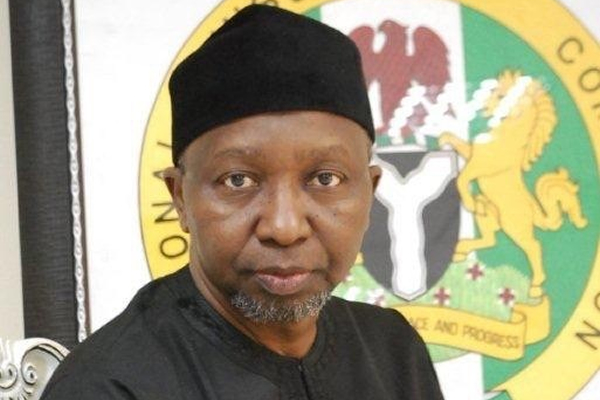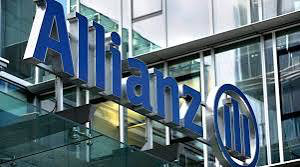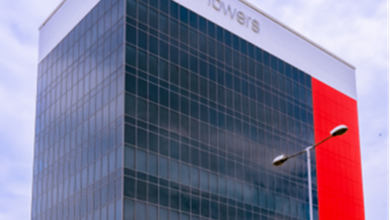How government strategy paves way for insurance growth in Egypt

By Oxford Business Group
With the largest population in the Middle East, a relatively developed life insurance industry and a government determined to pursue ambitious infrastructure development, Egypt is a promising market for both domestic and foreign insurers. In 2016 premiums collected by the sector grew by more than 12% over the previous year, and an ongoing reform of the health care sector presents an opportunity for further expansion over the medium term. However, significant currency devaluation and the risk of economic disturbance remain as challenges to growth in the sector.
Long History
In the 19th and early 20th centuries during the country’s time as a British protectorate, foreign firms played a leading role in the market, providing cover for the predominantly European commercial interests that drove the economy. However, from the establishment of the first national firm in 1900, Al Ahlia Insurance, domestic insurers began to account for an increasing share of the sector’s total premium. The arrival of locally owned El Shark Insurance and Misr Insurance in the 1930s helped to expand what was emerging as a vibrant industry. When the country declared itself a republic in 1953, the market was 14 local and foreign insurers. The new politics of the era, however, had a significant impact on Egypt’s insurers.
During the ensuing period of nationalisation the number of insurance companies was reduced to four state-owned giants, three of which carried out direct insurance operations, while the fourth acted as a reinsurer. This statist approach was to last until the mid1970s when, in the aftermath of the 1973 October War, the economic strategy of the country was steered back towards the principles of the free market. In 1975 the insurance market was liberalised, and private capital returned. The following years saw market entries by the Suez Canal Insurance Company (1979), Mohandes Insurance Company (1980) and Delta Insurance (1981). The Insurance Supervision and Control Law No. 10 of 1981, which underpins the sector to this day, helped to sustain market expansion, and by the mid-1990s the sector was made up of 12 insurers: four state companies, six private players and two “free-zone” firms. In 1998 an amendment to Law No. 10 increased the maximum foreign participation level in domestic insurance companies from 49% to 100%, a change which helped boost the number of market participants to 17. Since then, the most important structural alteration to the insurance landscape was the 2008 amendment mandating insurers offering both life and property cover to separate these lines of business.
Market Structure
There are currently 34 insurance and reinsurance companies in Egypt, according to the Egyptian Financial Supervisory Authority (EFSA) – the sector’s regulatory body which was rebranded in 2017 to the Financial Regulatory Authority (FRA). Nineteen of these institutions are general non-life insurers and 14 are life insurers, some of which are sister companies of general insurers who have been compelled to obtain a second license to operate as a result of the 2008 regulatory ruling. While the market is fragmented it is heavily concentrated at the top. The 10 largest insurers account for nearly 88% of the market, while the top-five firms claim a combined market share of just over 71%. In the life segment, the gross written premium (GWP) of publicly owned Misr Life Insurance Company (MLIC) was around twice that of its nearest private sector rival in 2016, while in the general insurance arena its sister company, Misr Insurance Company, is nearly seven times bigger in terms of GWP than the second-placed company, and accounts for around half of the sector’s total premiums. Many of the more recent market entrants are takaful, or sharia-compliant, operators, a notable example being the 2015 arrival of Misr Emirates Takaful Life Insurance Co (METLICO), a subsidiary of the UAE-based SALAMA, operating solely in Egypt. There are currently nine takaful firms in Egypt, and in 2017 the minister of public sector affairs revealed that the first government-owned takaful company will open in 2018. The new institution, Misr Takaful Insurance, will have an authorised capital of around LE500m ($32.9m).
While there are no integrated financial conglomerates in the market, a number of banks hold stakes in insurance companies or have historical links with them. The most significant connection of this type is that between Egyptian Saudi Insurance House and two banking institutions, Banque Misr and Egyptian Saudi Finance Bank. The market is home to a specialised insurance institution – the Export Credit Guarantee Company of Egypt (ECGE) – a closed joint-stock institution established in 1992 to support export development. A significant development to the market structure in 2016 was the acquisition of global insurer Chubb by competitor ACE to create the world’s largest publicly traded property and casualty insurance company. ACE and Chubb have been present in Egypt since 2002 and 2003, respectively, and the new entity, Chubb Limited, has revealed an ambitious expansion programme.
Regulation
Since its establishment in 2009, the approach of the FRA to the regulation of the industry has been one of gradual reform of the 1981 insurance law. This has been significantly amended over the years, notably with the 2008 amendment Law No. 118, which established the capital, solvency and reserve requirements for the sector. This framework requires, inter alia, a minimum capital of LE60m ($4m) for non-life insurers, an asset-to-liabilities ratio of 120% and a range of compulsory reserves dependent on type of business. The FRA also oversees all non-banking operations in capital markets, real estate, commodities, finance leasing and factoring, as well as having jurisdiction over any new financial instruments or products unrelated to banking. This combination of responsibilities lessens the likelihood of regulatory blind spots, allowing for coordinated strategising – such as the case of the development of sukuk, or sharia-compliant bonds, which is primarily a capital markets issue but with significant implications for takaful insurers seeking appropriate investment instruments.
The FRA has been leading an important review of insurance legislation for some years, with a new law being passed by the Egyptian parliament in December 2017. Coming into effect in June 2018 with provisions implemented over the following 15 years, the law will establish minimum capital requirements and contains provisions for entities to offer microfinance insurance. The legislation also contains a takaful module for the first time and allows for the creation of mono-line health care insurers, a development which is aligned with the government’s policy of allowing the private sector to play a greater role in health care provision.
In March 2017 the FRA revealed that it had reviewed the minimum capital requirement contained in the law as a result of the almost 50% drop in the value of the Egyptian pound the previous November. The sudden alteration in the value of the currency meant that the previously mooted requirement of LE120m ($7.9m) was considered inadequate, and it was therefore revised upwards to LE200m ($13.1m). This is a considerable advance on the current minimum capital requirement of LE60m ($4m), and it is expected that insurers will be given a grace period after the promulgation of the law within which they must meet the new level. While the altered framework will not pose a challenge to Egypt’s larger insurance companies, the question of how smaller firms will raise capital in order to satisfy the regulatory requirement is likely to be a salient part of industry discussion in the coming period.
PERFORMANCE: Despite the economic challenges that arose in the wake of the revolution in 2011 and Egypt’s subsequent political transition, the insurance industry has shown strong growth over recent years. Alaa El Zoheiry, managing director of Arab Misr Insurance Group, remained positive on the sector’s trajectory, “The insurance market will definitively grow this year, especially with health and motor insurance, which will be prompted in part by cost inflation,” El Zoheiry told OBG. Life insurance showed double digit year-on-year expansion between 2012 and 2016 and non-life cover rose by between 7.6% and 14.2% each year during this period. This trend was supported by insurers quickly paying out claims as a result of the revolution, which in turn strengthened confidence in the industry.
The IMF expects Egypt’s GDP growth to increase from 3.5% in 2016/17 to reach 6% over the medium term. Insurance penetration in the sector is estimated to be only 1.2% – just under the emerging market average of 1.3% and well below the global of average of 6.2%. According to the FRA, total GWP (life and non-life) expanded from LE9.7bn ($639m) in 2011 to reach LE17.3bn ($1.1bn) in 2016, with the highest rate seen in 2013 when the industry’s aggregate premium grew by 16.5%. The smallest premium rise for the period was posted in 2012 with growth of 9.5%. In May 2017 the EFSA reported that sector GWP reached LE11.5bn ($757.6m) in the first four months of the year, an increase in volume of 57.5% over the same period in the previous year. The industry body attributed this performance to higher customer awareness regarding the large changes in asset replacement values caused by the earlier currency devaluation. With regards to health care, insurers are facing increased costs in the short term for medical services and medicines due to the decline of the Egyptian pound. The rate of inflation in the health care sector rose to 33% in 2017 according to the Central Agency for Public Mobilisation and Statistics (CAPMAS).
The significant currency movement of late 2016 is also having a distortive effect on the investment income of insurers. In May 2017 the FRA issued a guideline which required insurers to record at least 80% of the gains made as a result of the changing exchange rate in a “special reserve” account, as part of shareholders’ equity. The remaining 20% of exchange revaluation profits were to be shown in income statements, a somewhat arbitrary figure which reduces the utility of year-on-year comparisons of investment income.
Reinsurance
Retention rates in Egypt are high by regional standards, with the non-life segment showing an average retention ratio of 62.6% in 2016, according to the FRA. Historically, Egyptian insurers were required by the regulator to cede up to 30% of their premium to the state-owned reinsurer Egypt Re, but this mandatory cession ended when Egypt Re was merged with Misr Insurance in 2007. The only remaining compulsory cession is a 5% requirement to the African Reinsurance Corporation (Africa Re), a regional multilateral insurance company with a local presence.
Egypt’s insurers have recourse to a large number of international insurance companies when it comes to passing on risk, providing they meet a range of criteria, including a rating from one of the four major international rating agencies – AM Best, Standard & Poor’s, Fitch or Moody’s – and more than $60m in capital. The FRA list of approved reinsurers runs to 262 companies as of 2017, based in diverse locations such as China and Sweden. The most common reinsurance practise, however, is the establishment of straightforward treaty arrangements with North American and European reinsurance institutions. The insurance law allows for the establishment of reinsurance brokers, and two companies, FREMIR Reinsurance Services and Willis Towers Watson, have established themselves in the market. A third reinsurance intermediary, Aphrodite Reinsurance Broker, acts as a specialist facilitator for aviation cover, while regional and international reinsurance brokers service Egypt’s market from overseas.
As the market has lacked a domestic reinsurer for the past decade, local reinsurance activity is limited to a small number of companies assuming some risk from their fellow insurers. The government has been exploring the possibility of establishing a new national reinsurer since 2013, intending to fill the gap in the market left by the exit of Egypt Re. The new institution, if formed, would be domestically funded, with some government participation. Initial plans called for local insurers to contribute $200bn, with further funds coming from banks and other institutions. However, in early 2017 the state-owned Misr Insurance, a main player in the project, revealed that the proposed capital of the new institution is likely to be cut to $50bn, due to difficulties in raising funds. At the time of the announcement, Abdel Raouf Kotb, chairman of the Insurance Federation of Egypt, said that prospective investors would make their decisions according to the results of an ongoing feasibility study. Whatever the outcome of the investment drive, the lower capital target means that the initial ambition to serve the Egyptian, Arab and African insurance markets may be altered to a domestically-focused strategy.
Business Lines
The aggregate premium take is almost equally divided between life cover, which claimed 48% of GWP in 2016, and non-life insurance, which accounted for 52% of the total. There are nine compulsory insurances in Egypt, covering areas such as liability for criminal trials, operating lifts, aviation and decennial liability for architects and contractors, but by far the most significant of the mandatory lines is motor third-party liability (TPL) for bodily injury. This requirement has helped to establish motor cover as the biggest source of premium for Egypt’s insurers, with motor TPL and own damage policies accounting for 33% of the non-life total in 2016, according to the FRA.
Property insurance is the second biggest non-life business line, with 16% of GWP, and is being driven by the expansion of residential and commercial real estate demanded by Egypt’s large population. The construction effort being undertaken by the government includes the development of new cities in and around Cairo, plans for 1m affordable homes and the industrial development of 75,000 sq km of land adjacent to the Suez Canal, adding to the momentum of this segment. Engineering cover, which accounted for 9.8% of GWP in 2016, is closely allied to the demand arising from the construction sector, and has long been a staple of the non-life segment. Other important non-life business lines include energy, cargo and medical cover.
The industry body for the domestic sector, the Insurance Federation of Egypt, has lobbied for more compulsory business lines, pointing out that other markets in the region feature between 10 and 20. The expansion of mandatory insurance has historically been a growth driver across the Middle East and North Africa region, and legislative change remains an option for the FRA as it seeks to grow the industry. In the view of the Insurance Federation, the most promising areas for the implementation of compulsory insurance currently are residential property, medical liability, professional indemnity, microinsurance and protection insurance for Egyptians working in other Arab countries.
Health Insurance
One line of business in particular is likely to emerge as a growth driver for the industry. The state-owned Health Insurance Organisation (HIO) has sought to provide affordable health care to citizens for decades, but the government plans to radically alter the way Egyptians interact with the health care infrastructure. Access to the current system costs Egyptians LE112 ($7.38) per year, and covers 58% of the population. However, public sector health care facilities are overcrowded and underequipped, and only an estimated 6% of those covered by the HIO system actually utilise it. Instead, the majority of Egyptians pay their own expenses either in the public system or – in the case of the around 10% of the population who have opted for it – by subscribing to a private health care insurance scheme. The government hopes that a planned overhaul of the system will provide better health outcomes for the population, as well as provide more business opportunities for private health care insurance providers. Despite the current industry situation, Ayman Hegazy, managing director for life insurance at Allianz, noted a potential upside. “Insurance penetration rates are still very low which offers a lot of opportunity to educate the public on the benefits of insurance as a safety net,” he told OBG.
Authorities took their first significant step to reform the health care system in April 2017 when the cabinet approved a national health insurance draft law and referred it to the State Council for legal review. By October 2017 a draft of the law had been prepared and was subsequently passed two months later. The overhaul will be built around three new administrative bodies: a financing entity; a health care body that delivers the service in primary health care units and hospitals; and a supervisory institution that will handle accreditation of service units and providers, quality of service, and supervision of operations within the sector.
The new programme will cost LE140bn ($9.2bn) and will undergo a phased implementation across the governorates between 2018 and 2032. Subscription to the system will be compulsory, and will be priced between LE1300 ($85.64) and LE4000 ($264) per person, depending on income. Around 25% of the population, or 24m citizens, live below the poverty line and according to the current plan, will have these charges paid for by the government. After the implementation of the health insurance bill, private health care is expected to play a significant role (see Health chapter).
Other Drivers
Further growth opportunities have emerged from unexpected quarters in recent years. For example, the 2014 arrival of ride-sharing service Uber has provided fresh routes to premium for the sector. At the close of 2016 the firm partnered with insurance multinational AXA to provide cover for passengers, including total, partial and permanent disabilities, accidental medical expenses and accidental death. Another area of rapid expansion within the industry is the sharia-compliant segment. According to the FRA, total takaful contributions in the Egyptian market stood at LE2.2bn ($144.9m) in 2016, nearly 10% of the sector’s aggregate GWP. While this represents a relatively small slice of the market, the growth trajectory of the takaful segment in the country is a steep one.
According to global professional services firm EY, takaful accounted for 0.3% of the life market in 2010, and by 2015 its share had increased to 5%. A similar pattern is seen in the non-life segment with takaful accounting for 4.9% of the market in 2010, but by 2015 the figure had nearly doubled to 9.2%. In property cover, where takaful generally performs well due to the pre-eminence of tangible assets in the world of sharia finance, the Egyptian Islamic insurance segment performs even more strongly, accounting for 14.3% of the overall property insurance market in 2016, according to the FRA. The continued expansion of takaful in the market is being driven by increasing awareness of the benefits of sharia-compliant insurance among the more conservative rural population.
Distribution
Reaching more remote population centres is becoming a priority for Egyptian insurers. An estimate by the non-profit industry observer Insure Egypt suggests that around 35% of the sector’s GWP is secured by direct means, with agents accounting for a further 35%, brokers for 25% and bancassurance for 5%. Distribution approaches vary considerably by line of business, with up to 90% of the oil and aviation business being handled directly, for example.
Insurance Law No. 10 of 1981 does not distinguish between brokers and agents, referring to them instead as insurance “intermediaries”. There are thought to be approximately 8000 active intermediaries in the market. Those working as tied agents are allied to a single company, while brokers channel business to a wider range of insurance firms. The authorities have sought to formalise this area of the market, starting with a law introduced in 2008 which recognised the category of corporate broker and established minimum standards of training and limits for professional indemnity. While the regulator has tightened the framework surrounding traditional distribution channels, it has begun to relax the administrative regime in other areas.
Bancassurance
In 2013 the Central Bank of Egypt (CBE) lifted a prohibition on bancassurance transactions from early 2009. The CBE’s concerns four years earlier were centred on a lack of adequate training amongst staff responsible for bancassurance products and an increasing amount of mis-selling. Initially, banks were restricted to forming bancassurance partnerships with just two insurers (one life and one non-life), but in 2016 the CBE and the EFSA amended the regulations to allow each bank to establish tie-ups with up to four insurers: one general insurer, one general takaful operator, one life insurer and one family takaful company. The new regulations established a clear code of conduct with bank staff not allowed to sell personal insurance cover, and banks not permitted to receive commissions, so bancassurance growth has primarily been driven by insurance sold on the back of loans – particularly motor insurance tied with new vehicle sales. Some insurers have also pointed out that delays in securing approvals for bancassurance agreements from the CBE have limited returns from this channel. Nevertheless, the newly liberated bancassurance model provides a useful route to the market for the industry.
A resolution issued by EFSA in 2015 opened the door to online sales in the areas of compulsory motor TPL, travel and term life insurance. “The potential of innovation, offering products that are adapted to the market, is very large,” Mohamed Mahran, managing director for insurance at Allianz, told OBG. In September 2016 this important first step was elaborated by EFSA decision No. 805, which establishes a number of limits regarding online insurance sales. Travel insurance policies sold online must not exceed LE500,000 ($32,900) in value, and insurers who have received permission from the EFSA for online sales are required to establish call centres to respond to customer enquiries and complaints associated with electronic transactions. “Technology will play a big role in the future of the sector,” Mahran added. A further EFSA decision sets out the necessary technological safeguards which must be applied to areas such as network security and data privacy.
Outlook
The expansion of the insurance industry over the longer term is tied to the country’s growing economy. Despite concerns regarding sector privatisation, regulatory changes such as proposed mandatory insurance cover for police and security forces and the government health care provision strategy will drive premium growth. However, there is also the challenge of significantly improving the standards of public hospitals if they are to be included in private health insurance schemes. With strong government support building at the industry’s relatively low base, Egypt’s insurers are well positioned to grow their balance sheets.





